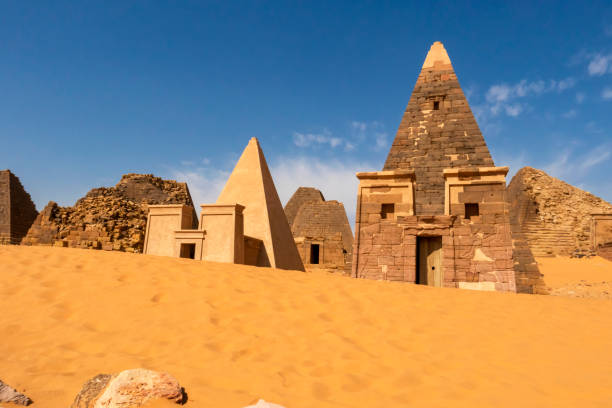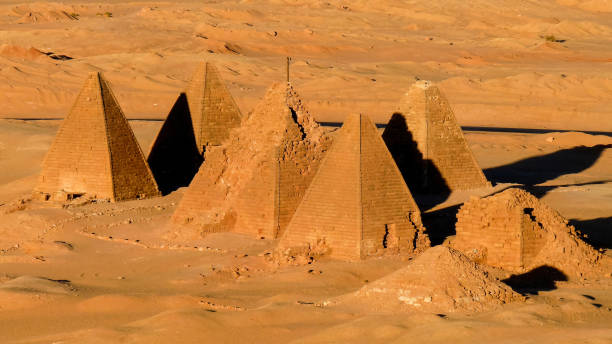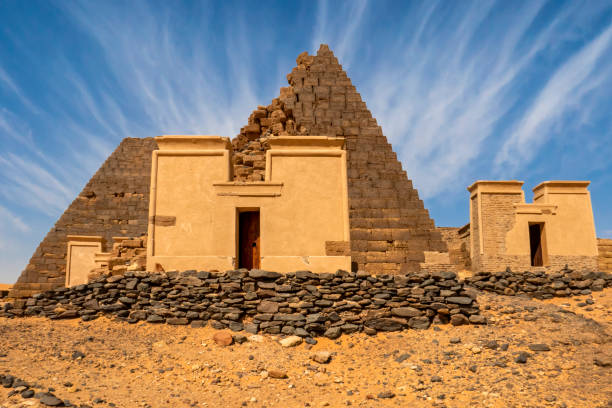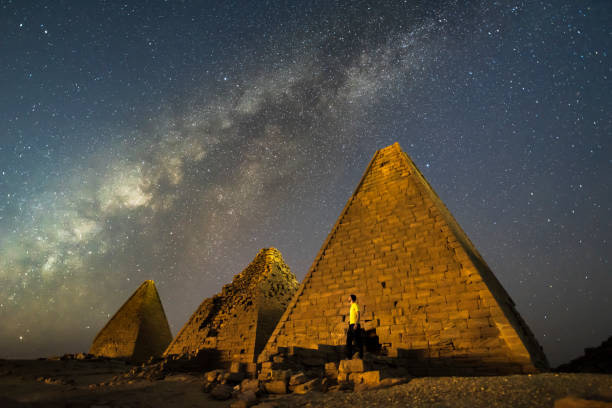Pyramids in Sudan
The pyramids in Sudan stand as silent witnesses to a fascinating chapter in African history. These ancient structures, reminiscent of their more famous counterparts in Egypt, tell a unique tale of a civilization that flourished along the banks of the Nile. In this exploration, we delve into the history, architecture, and significance of the Nubian pyramids, unravelling the mysteries that have intrigued historians and archaeologists for centuries.



Explore the History of the Pyramids in Sudan
1. The Birth of Pyramids: A Historical Overview
Pyramids in Sudan - Tracing the Origins
The history of the pyramids dates back to the Kingdom of Kush, an ancient Nubian state that existed from the 8th century BCE to the 4th century CE. As the Kingdom of Kush thrived, so did its unique architectural style. The Nubian pyramids are concentrated in an area known as the Nubian Desert, particularly in modern-day Sudan, showcasing the remarkable influence of Egyptian culture on the region.
2. Architectural Marvels: Decoding the Design of Pyramids
Architectural Splendor - Pyramids in Sudan
While sharing a resemblance with their Egyptian counterparts, Nubian pyramids exhibit distinctive features. The most notable difference lies in the angle of their slopes, which is steeper than that of the Egyptian pyramids. The pyramids are smaller in scale, reflecting the Nubians' adaptation of the Egyptian architectural style to suit their own cultural and religious practices. Exploring the architectural nuances of these structures provides a window into the ingenuity of the ancient Nubian civilization.
3. The Royal Necropolises: Burial Grounds of Nubian Rulers
Pyramids in Sudan - Royal Tombs and Necropolises
The pyramids served as tombs for the elite and rulers of the Kingdom of Kush. The necropolises, such as Nuri and El Kurru, are home to the final resting places of Nubian kings and queens. Each pyramid held significance not only as a burial site but also as a symbol of the ruler's divine connection. The hieroglyphics and carvings adorning the pyramids provide insights into the religious beliefs and rituals of the Nubian people.
4. Cultural and Religious Significance: The Nubian Perspective
Pyramids in Sudan - A Cultural Tapestry
Beyond their architectural significance, the pyramids hold deep cultural and religious meaning. The Nubians, influenced by both indigenous beliefs and the Egyptian pantheon, incorporated their unique spiritual practices into the construction of these monuments. The pyramids served as a bridge between the earthly realm and the afterlife, emphasizing the Nubian people's spiritual connection with the cosmos.
5. Rediscovery and Preservation Efforts: Safeguarding Nubian Heritage
Preserving the Past - Pyramids in Sudan
In recent decades, increased attention has been given to the preservation and study of the pyramids. Archaeological missions and preservation initiatives have shed light on the historical significance of these structures. Organizations and experts work tirelessly to safeguard the Nubian heritage, ensuring that future generations can continue to unravel the mysteries encapsulated within the ancient stones.
6. Visitor's Guide: Exploring Pyramids Today
Journey Through Time - Pyramids in Sudan
For those seeking a first-hand experience of the pyramids, Sudan offers a unique opportunity. Visitors can explore sites like Meroe, where over 200 pyramids stand as a testament to the once-thriving Kingdom of Kush. Guided tours provide insights into the history and significance of each pyramid, allowing travellers to immerse themselves in the captivating narratives engraved in the Nubian landscape.
Conclusion: Unveiling the Legacy of Nubian Pyramids
Pyramids in Sudan - Where History and Mystery Converge.

